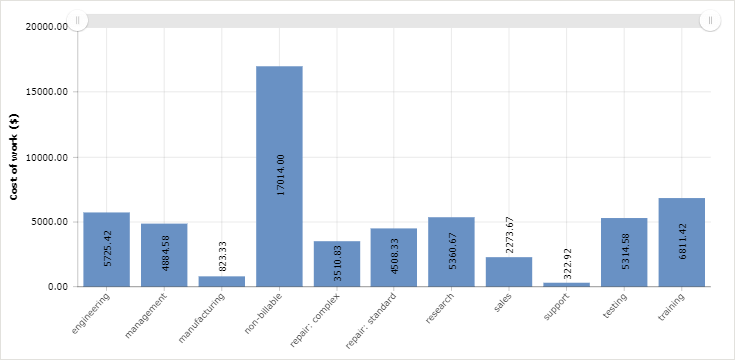
Do you feel overwhelmed by the spiraling costs of running an online shop? Has it been tough to keep up with rising fees and find ways to cut down on expenses?
Fear not – managing your finances needn’t be a daunting task. With the right approach, proper planning, some creative problem-solving, and our helpful guide, you may soon discover that there’s surprisingly more flexibility in eCommerce cost management than you thought.
Pull up a seat, sip some peppermint tea (or whatever beverage tickles your fancy), and let’s learn how to master the art of managing eCommerce expenses together!
How Much Does It Cost to Manage an eCommerce Business?
Managing an eCommerce business can be expensive. Depending on the complexity of your products and services, you could be looking at any amount from a few hundred dollars for hosting fees a year to tens of thousands for a fully customized marketplace.
However, there are numerous ways to launch and operate your online store without breaking the bank. For instance, you may use templates or find free marketing resources so that you can get your business up and running in no time. However, no matter how small the initial cost may be, it’s important not to forget about investing in customer experience, scalability, and beyond – these play a major role when it comes to success. ❗
Overall, when launching and managing an online business, it’s important to understand the associated costs so you can accurately forecast your budget and plan accordingly. And here are some of the main types of eCommerce expenses you need to always take into account:
12 Main Types of eCommerce Expenses
- Payment processing – These are typically charged by a payment processor for every online transaction and vary depending on the type of processing service you choose.
- Merchant account – A merchant account is an agreement with a financial institution that allows you to accept payments from customers via credit or debit cards, e-checks, etc.
- Web hosting – For any eCommerce site to exist, it needs a web host, and this usually comes with a monthly fee.
- Domain name registration – Just like web hosting, domain name registration is necessary for any website and typically involves an annual fee.
- Shopping cart software – Shopping cart software helps to automate the checkout process and has associated fees depending on the platform you choose.
- Shipping and logistics – If you offer physical products, shipping and logistics will be an important expense for your business, and it needs to be factored in when pricing product and services.
- Advertising and marketing – To attract customers and drive sales, you may need to invest in advertising and marketing.
- Product creation and development – If you’re selling a product that needs to be created or developed, this will incur additional costs.
- Employee salaries / contractors – In case you have employees or use contractors to help run your business, these are also expenses that need to be factored in.
- Legal and accounting costs – You may need to hire a lawyer and accountant for certain tasks related to setting up and running your eCommerce business, as well as other fees associated with legal compliance, such as taxes.
- Maintenance – A certain amount of maintenance is required for any website, and this will incur additional expenses depending on the type of service provider you use.
- Miscellaneous costs – Other miscellaneous expenses may include things like software subscriptions, marketing materials, or customer rewards programs that need to be taken into account.
How to Manage Costs in an eCommerce Business
📝 Plan
Planning is a huge part of any successful business strategy. And when it comes to managing costs in an eCommerce business, it’s important to have a comprehensive plan that takes into account both short-term and long-term goals. This includes setting realistic budgets for each quarter or year and making sure that any expenses are planned out beforehand so that they don’t get out of control later on.
Planning also involves looking at potential risks and developing strategies to mitigate them early on – such as having a backup plan if there’s a slowdown in sales or unexpected spikes in costs.
So, how to create a budget for an eCommerce startup or another project?
- Calculate your startup costs by adding up all necessary items, such as hosting fees, website design fees, and marketing costs.
- Include any overhead expenses such as rent for the workspace, operational costs, or preliminary inventory expenses.
- Review the list and subtract any savings or expected income to determine your total budget.
- Break down the cost each month of expenses like hosting and staff salaries so you can better manage those funds.
- Factor in some padding for unexpected developments; no entrepreneur knows what’s around the corner.
Start with these simple steps, and you’ll be well on your way to creating a proper budget for your online store.
🔎 Track
Once you’ve established a budget, the next step is to track your expenses.
Cost tracking helps ensure that everything is going according to plan and that no surprises pop up down the road. It also allows you to identify any areas where costs can be reduced or eliminated altogether.
Record keeping is the primary cost tracking method available to businesses today, and thanks to modern technology, you can make it as easy and streamlined as can be. Such solutions as QuickBooks and FreshBooks can readily provide you with all the tools for more efficient accounting. But when it comes to tracking staff-related costs, actiTIME is your best bet.
With powerful time management and reporting features, this software makes it easy to monitor employee hours, work-related costs, and individual productivity. Rather than trying to manually track every expense with a pencil and paper, you can let actiTIME handle all the details for you – from payroll calculations to invoicing.

By leveraging the power of actiTIME, you can keep a close eye on your budget and ensure that nothing slips through the cracks. So, sign up for a free online trial today and give it a go.
📊 Analyze
The last step in effective cost management is analysis – taking the time to look at all the data gathered from tracking expenses and determining what it means for your business going forward.
The analysis involves identifying patterns in spending habits, discovering any areas where money could be saved or reallocated elsewhere, evaluating ROI for various investments made over time, and more.
By taking all this information into account and making adjustments accordingly, businesses can ensure their bottom line remains healthy while still providing customers with quality products and services at competitive prices.
How Does eCommerce Reduce Costs?
📦 Streamline supply chain processes
Create a solid infrastructure on which your eCommerce base is built. Break down barriers both within the organization and out by reducing communication silos and utilizing cloud-based technology that makes it easy to start tracking data from partners, vendors, and warehouses.
And don’t forget about customer expectations! Prioritize strategies that help keep customers informed, so they remain satisfied throughout their entire purchasing journey.
🤖 Use automation
With automation, you can streamline common processes like inventory management, shipping and tracking orders, customer support, and more. It allows you to reduce overhead costs associated with manual labor while also increasing efficiency in the workplace.
You don’t need to hire extra staff members or pay overtime for employees who are manually performing tasks that could be automated. Plus, when processes are automated, they usually become more accurate and reliable.
💰 Save on marketing
One of the biggest benefits of eCommerce is that it allows you to reach a wide audience through the internet without paying extra fees for marketing campaigns. You can refer to organic marketing strategies by targeting specific demographics and using SEO and social media to reach potential customers more efficiently than ever before.
Additionally, many eCommerce platforms offer integrated marketing tools that make it easy for businesses to create effective campaigns without needing any prior experience in marketing or design.
🔙 Minimize product returns
Returns are expensive. If you have too many product returns, they can eat into your profits and significantly reduce them.
To minimize product returns, focus on product quality and make sure your product descriptions and images accurately depict the products in question. If customers have a clear understanding of what they’re getting before they purchase something, they are less likely to be disappointed with their purchase and return it.
🤝 Negotiate with suppliers
Negotiating better prices from suppliers is one of the best ways to cut costs in your eCommerce business.
Start by researching your suppliers – find out which ones offer the best prices and terms for the items you need. Then contact them directly to see if there’s any room for negotiation on prices or terms. Don’t be afraid to ask for discounts or extended payment terms – you never know until you try!
⌛ Track time
Accurate time tracking can help you save money in two ways:
- First, it allows you to figure out where time is being wasted.
- Second, it enables you to delegate tasks more effectively so that everyone is working as efficiently as possible.
Investing in software that tracks time can help you optimize both of these things so that your team is always working at peak efficiency and projects are completed quickly and on budget. And in case you need a user-friendly solution that makes time tracking a breeze, actiTIME is here to help.
actiTIME is more than just a tool – it’s the modern-day equivalent of having a trusty sidekick. It helps you keep tabs on those ever-important tasks, giving you control over the way you manage your time and project workloads. In short, it’s an automated assistant that won’t take any days off, making sure your work is well-organized, and you’re not swamped in paperwork or forgetting important details.
Get started today on the path to efficient, accurate time management with actiTIME!
Conclusion
If you’re looking to keep more of your hard-earned income this year, following our cost management guide for eCommerce is a great place to start. By drilling down on where you’re spending and making adjustments accordingly, you can save big without sacrificing quality or service.
So, what are you waiting for? Get started today and see the difference tomorrow!

















































